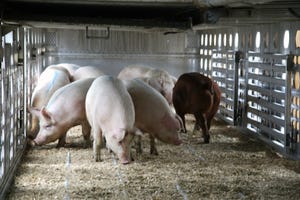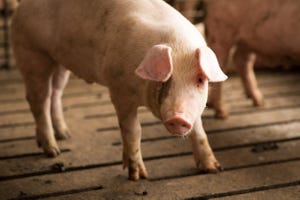Government-Gathered Market Data Helped Maintain a Level Playing Field; What will the Pork Industry Do Now?
October 14, 2013

Another week with little or no data has all of U.S. agriculture in a pickle. The lack of data and information has not stopped the industry, as grain and livestock harvests must go on and commerce must be conducted. But the void has left those activities to operate, to a great degree, in the dark. Any wrecks that are happening may not be discovered until the light of day and renewed information availability reveal them.
So why do we depend on all of this government data anyway? That’s a question that we seldom ask because it has been part of our normal business practices. Until the data is gone, of course.
The primary reason that we have government data is that agriculture has always been a business with asymmetrical information. That is, one side of the trade knows more than the other. That situation, of course, was caused by there being many sellers and relatively few buyers of agricultural products. To use the pork industry as an example, a single hog producer may only deal with one or two buyers, where a single pork packer will buy from hundreds of suppliers. Which one, based solely on its interactions over pricing decisions, would be more likely to know what “the market” is? The packer, of course, so public information was produced as a way of leveling the playing field.
Like what you’re reading? Subscribe to the National Hog Farmer Weekly Preview newsletter and get the latest news delivered right to your inbox every week!
Government-gathered and published prices, supplies, etc. facilitate decision-making and “efficient” marketing. “Efficient” here is used in reference to the time, place and quality roles of a marketplace being carried out in a manner that accomplishes those necessary tasks at minimum cost, thus minimizing the ultimate costs of products to consumers.
A secondary reason for government reporting is that private parties must be careful to not run afoul of antitrust laws. When competitors report their prices or output figures to any private group, be that a company or a trade association, it would be easy to learn competitors’ practices and strategies or to send signals about your own practices and strategies as a means of fostering collusion. The government, of course, is immune to antitrust laws and does not face that same level of risk.
The antitrust risks can be addressed, of course, but hardly ever eliminated. Trade associations are particularly scrutinized by the U.S. Department of Justice since they are, by definition, organizations where competitors meet to address common problems such as government policy, worker training, etc. There is a rich case history of trade association antitrust violations from which the Department of Justice has derived some specific guidelines that trade associations can follow to reduce antitrust risk, should they choose to be in the data/information business. Those guidelines require a minimum number of participants, maximum market share that can be represented by any one entity and other factors that, however, can serve to limit just how much information can even be provided.
Private firms must also be careful about how they handle information and how they provide it to both participants and others. Cooperatives have some antitrust immunity from the Capper-Volsted Act but must be organized correctly and are still limited to actions that do not significantly impact market prices.
And then there is the matter of costs. Gathering and publishing data are not cost-free activities even if the government does them. Government provides data to the public since the public pays for the data gathering, summarization and publication processes. But any private effort that makes its data available to the public has a huge problem: Why would anyone pay for it if it is available free of charge? And further, one party’s use of the data does not diminish its value to another party. It’s a classic public good unless you keep it proprietary in the manner that current private information services do.
So do we keep going along depending on government sources that at least sometimes are not very dependable? Will we conclude that there is no way to generate our own data and information in a manner that does not violate antitrust laws? Are we unwilling to pay the costs of a private system? Are we also unwilling to live with the data being available only to the parties that do pay? Do we believe there is no way to make everyone pay for data that will be made public in order to prevent free-riders?
None of those are very easy questions, but after the past two weeks, there may not be many in the pork industry that would quickly answer “Yes” to any of them. And if there are many of you answering “No” to those questions, then maybe it is time to solve our own problems just as the Moline 90 did 50 years ago when “Nickels for Profits” was first conceived.
Pork producers have embraced the challenge of big issues before. Why would that change now?
You May Also Like



